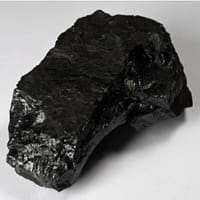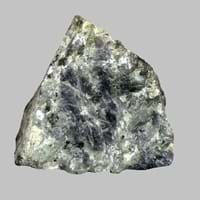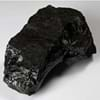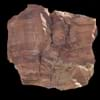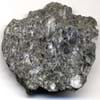Definition
Coal is a combustible black or brownish-black sedimentary rock usually occurring in rock strata in layers called coal beds
Anorthosite is a granular igneous rock composed largely of labradorite or plagioclase
Discoverer
John Peter Salley
Unknown
Etymology
From the Old English term col, which has meant mineral of fossilized carbon since the 13th century
From French anorthose plagioclase + -ite1
Class
Sedimentary Rocks
Igneous Rocks
Sub-Class
Durable Rock, Soft Rock
Durable Rock, Medium Hardness Rock
Group
Not Applicable
Plutonic
Other Categories
Coarse Grained Rock, Fine Grained Rock, Medium Grained Rock, Opaque Rock
Coarse Grained Rock, Opaque Rock
Texture
Amorphous, Glassy
Foliated, Glassy
Color
Black, Brown, Dark Brown, Grey, Light to Dark Grey
Black, Bluish - Grey, Brown, Green, Grey, Light Greenish Grey, Pink, White
Durability
Durable
Durable
Appearance
Veined or Pebbled
Layered, Banded, Veined and Shiny
Interior Uses
Not Yet Used
Decorative Aggregates, Floor Tiles, Homes, Interior Decoration
Exterior Uses
Not Yet Used
As Building Stone, As Facing Stone, Garden Decoration
Other Architectural Uses
Not Yet Used
Curbing
Construction Industry
Cement Manufacture, for Road Aggregate, Making natural cement, Steel Production
As Dimension Stone, Cement Manufacture, for Road Aggregate
Medical Industry
Not Yet Used
Not Yet Used
Antiquity Uses
Artifacts
Artifacts, Sculpture, Small Figurines
Commercial Uses
Alumina Refineries, Electricity Generation, Liquid Fuel, Manufacture of Soap, Solvents, Dyes, Plastics and Fibres, Paper Industry
Creating Artwork, Curling
Types
Peat, Lignite, Sub-Bituminous Coal, Bituminous Coal, Anthracite, Graphite
Proterozoic Anorthosite and Archean Anorthosite
Features
Helps in production of Heat and Electricity, Used as fossil fuel
Generally rough to touch, Is one of the oldest rock
Archaeological Significance
Monuments
Not Yet Used
Not Yet Used
Famous Monuments
Not Applicable
Not Applicable
Sculpture
Not Yet Used
Used
Famous Sculptures
Not Applicable
Not Applicable
Pictographs
Not Used
Not Used
Petroglyphs
Not Used
Not Used
Figurines
Not Yet Used
Used
Formation
Coal forms from the accumulation of plant debris in a swamp environment which is buried by sediments such as mud or sand and then compacted to form coal.
Anorthosite is a phaneritic, intrusive igneous rock which is characterized by a predominance of plagioclase feldspar which is almost 90–100%, and a minimal mafic component.
Mineral Content
Analcime, Apatite, Barite, Calcite, Chalcopyrite, Chlorite, Chromite, Clausthalite, Clay Minerals, Crandallite Group, Dolomite, Feldspar, Galena, Gypsum, Marcasite, Muscovite or Illite, Pyrite, Quartz, Siderite, Sphalerite, Zircon
Amphibole, Clinopyroxene, Ilmenite, Magnetite, Olivine, Orthopyroxene
Compound Content
Carbon, Hydrogen, Nitrogen, Oxygen, Sulphur
Ca, CaO, Chromium(III) Oxide, MgO, Sulfur Trioxide
Types of Metamorphism
Burial Metamorphism, Cataclastic Metamorphism, Regional Metamorphism
Cataclastic Metamorphism, Contact Metamorphism
Types of Weathering
Not Applicable
Biological Weathering
Types of Erosion
Not Applicable
Chemical Erosion, Wind Erosion
Grain Size
Medium to Fine Coarse Grained
Coarse Grained
Fracture
Conchoidal
Irregular
Porosity
Less Porous
Less Porous
Luster
Dull to Vitreous to Submetallic
Pearly to Subvitreous
Cleavage
Non-Existent
Irregular
Toughness
Not Available
Not Available
Specific Gravity
1.1-1.4
2.62-2.82
Transparency
Opaque
Translucent
Density
1100-1400 g/cm3
2.7-4 g/cm3
Resistance
Heat Resistant
Heat Resistant, Impact Resistant, Pressure Resistant, Scratch Resistant, Wear Resistant
Deposits in Eastern Continents
Asia
Bangladesh, Burma, Cambodia, China, India, Indonesia, Kazakhstan, Malaysia, Mongolia, Pakistan, Turkey, Vietnam
Not Yet Found
Africa
Botswana, Kenya, Morocco, Mozambique, South Africa, Tanzania
Not Yet Found
Europe
Belgium, Bulgaria, England, France, Germany, Greece, Hungary, Kosovo, Netherlands, Norway, Poland, Romania, Serbia, Slovakia, Slovenia, The Czech Republic, Ukraine, United Kingdom
Bulgaria, France, Germany, Greece, Hungary, Italy, Latvia, Lithuania, Malta, Poland, Portugal, Romania, Slovenia, Spain, Sweden, The Czech Republic
Others
Not Yet Found
Not Yet Found
Deposits in Western Continents
North America
Canada, Mexico, USA
Canada
South America
Brazil, Chile, Colombia, Venezuela
Bolivia, Colombia
Deposits in Oceania Continent
Australia
New South Wales, Queensland, Victoria
Central Australia, South Australia, Western Australia
All about Coal and Anorthosite Properties
Know all about Coal and Anorthosite properties here. All properties of rocks are important as they define the type of rock and its application. Coal belongs to Sedimentary Rocks while Anorthosite belongs to Igneous Rocks.Texture of Coal is Amorphous, Glassy whereas that of Anorthosite is Foliated, Glassy. Coal appears Veined or Pebbled and Anorthosite appears Layered, Banded, Veined and Shiny. The luster of Coal is dull to vitreous to submetallic while that of Anorthosite is pearly to subvitreous. Coal is available in black, brown, dark brown, grey, light to dark grey colors whereas Anorthosite is available in black, bluish - grey, brown, green, grey, light greenish grey, pink, white colors. The commercial uses of Coal are alumina refineries, electricity generation, liquid fuel, manufacture of soap, solvents, dyes, plastics and fibres, paper industry and that of Anorthosite are creating artwork, curling.
